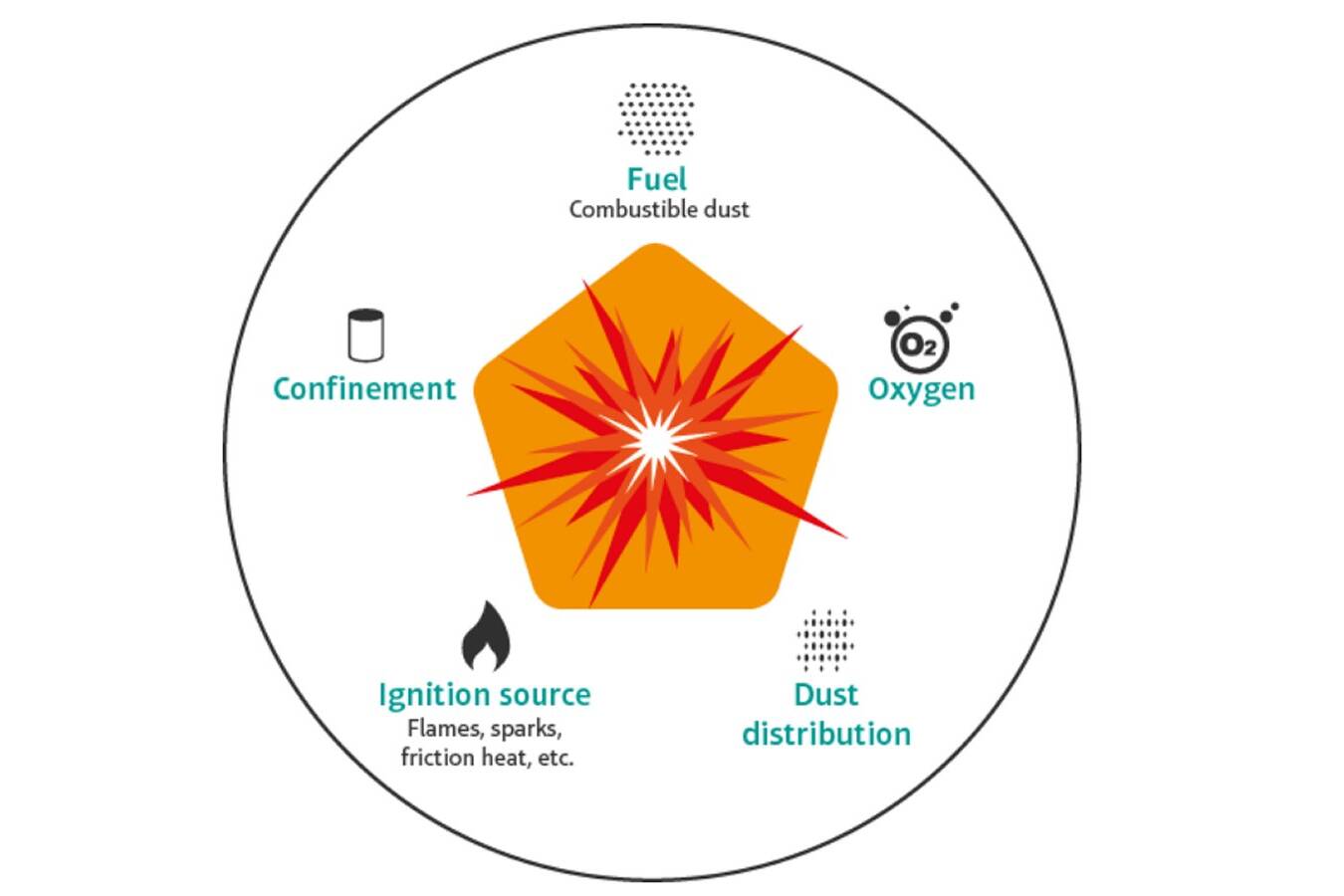The wiki serves as a vital guide for understanding regulatory requirements and implementing effective safety measures in industrial plants worldwide.
Serious and costly hazard
Industrial explosions are a serious and costly hazard. The history of industrial accidents shows that explosions in unprotected plants can lead to immense structural and financial damage, often driving companies to bankruptcy. Even if nobody is harmed, every hour of lost production costs money and puts the company’s existence at risk. For example, the most severe explosion in German history occurred in 1921 at BASF in Ludwigshafen, resulting in 561 fatalities. Industrial plants must be protected against the consequences of explosions to ensure employee safety and quick resumption of production. Explosion safety concepts can dramatically reduce or even eliminate production downtime.
Causes of an industrial explosion
Understanding what causes an industrial explosion. Explosions occur when a combustible material, an ignition source, and atmospheric oxygen collide in a confined space. While preventive measures aim to stop this lethal mixture, the vast number of potential ignition sources often makes complete prevention impossible. This is why constructive explosion protection, which minimizes the damage caused by an incident, is the most crucial aspect of industrial safety. Hazardous areas, known as potentially explosive areas, are classified into zones based on the likelihood of an explosive atmosphere occurring. These zones are critical for defining appropriate safety measures.
The wiki outlines the EX zones for hazardous areas:
Gas-Explosive Areas (ATEX)
- Zone 0: Permanent or long-term presence of an explosive gas atmosphere.
- Zone 1: Likely presence of an explosive gas atmosphere during normal operation.
- Zone 2: Not expected to occur, and if it does, it is infrequent and temporary.
Areas with Combustible Dusts (ATEX)
- Zone 20: Continuous, long-term, or frequent presence of a combustible dust cloud.
- Zone 21: Occasionally expected presence of a combustible dust cloud during normal operation.
- Zone 22: Not expected during normal operation, but if it occurs, it is only for a short time.
Plant safety and operational efficiency
Modern protection concepts must meet three requirements. A modern explosion protection concept is built on essential pillars to ensure plant safety and operational efficiency. These systems must be permanently available, comply with all legal requirements, and be cost-effective in terms of installation and running costs. All protection concepts from REMBE meet these requirements.
Steps to making processes safer include:
- Risk Assessment
- Prevention and organisational measures (e.g., technical measures like effective dust extraction or eliminating ignition sources)
- Protective measures (Constructive explosion protection)
Key Protective Measures Detailed in the Wiki:
- Conventional Explosion Venting: Using explosion vents to rupture and reduce pressure below a vessel’s strength.
- Explosion Suppression: Using sensors to detect an explosion at an early stage and initiating the sudden release of extinguishing powder.
- Explosion Isolation (Decoupling): Protecting adjacent parts of the plant from the spread of an explosion, using active or passive systems like quench valves or non-return flaps.
Flameless pressure relief
Flameless explosion venting enables indoor installation. With flameless pressure relief, the flames in the filter fabric of the flame trap are cooled extremely efficiently and thus nipped in the bud. Neither flames nor pressure escape. This allows the production plant to be set up in a process-optimized manner indoors, eliminating the need for vent ducts that are required for conventional venting and which prevent a process-optimized system design. This technology also ensures the highest level of protection for employees by reducing the typical increase in pressure and noise pollution to a barely perceptible minimum.
Explosion Safety Wiki
The REMBE Explosion Safety Wiki is available now for free access, providing tailored solutions to limit the effects of an explosion to a harmless level and ensure quick resumption of production.

